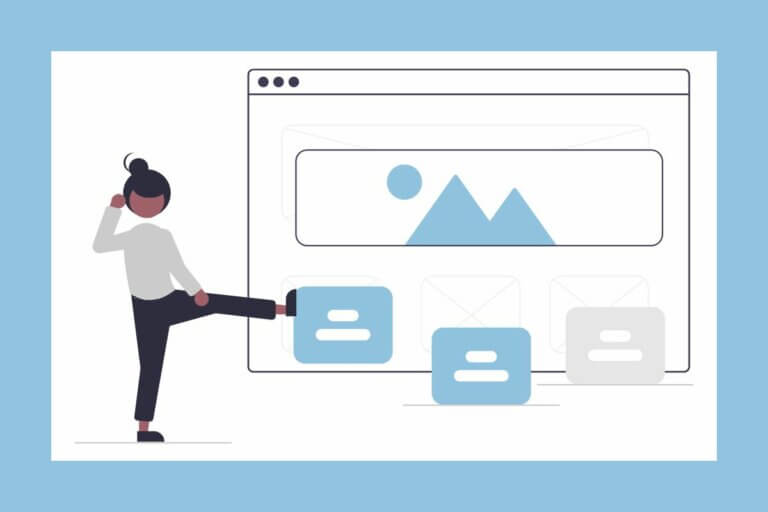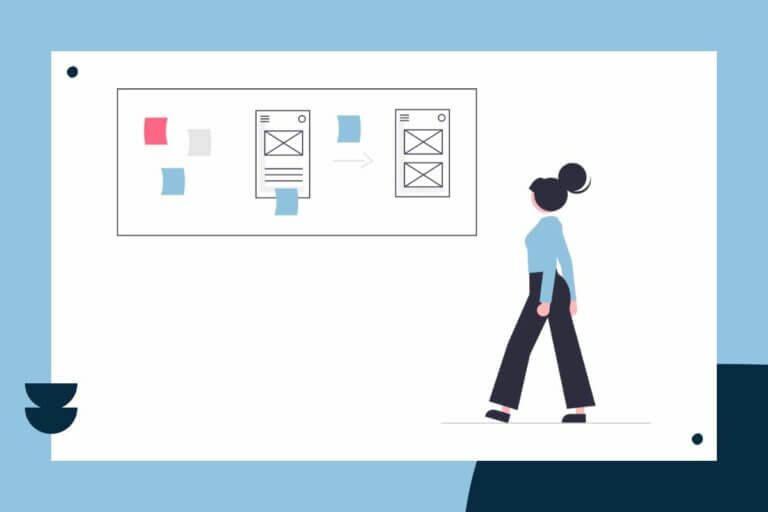You know how you used to use the Yellow Pages to find businesses? Well those days are gone. Now, you turn to Google.
As business owners, we intuitively know we want a website, but we never really think about why we need one. Often, we just throw something up online just to have our website replace the Yellow Pages.
Your Website is Your Best Marketing Asset
Yes, a website is one of your best marketing assets. In fact, if you really stop and think about it, it’s like a 24/7 sales team, working on your behalf night and day.
Often, we take a “set it and leave it” approach to our website. When we do this, we’re not taking advantage of our website. Soon, our website feels like a drain on our business, or like a useless asset because it is not bringing any benefit to us or our clients.
To try solve this problem, we update our website with the latest fad or bright and shiny object. Maybe, we add some flash or a poorly-thought-out popup box. But, we set it and leave it again, and we get the same disappointing results.

Plan A Smart Website for Growth
Growth-driven web design is a design methodology from HubSpot. (In fact, I’m getting certified in this technique right now.) While many of the specifics of this technique apply to larger organizations, the principles apply to small businesses and soloprenuers like us.
Basically, the concept goes something like this. First, you start with a simple planning process about what you want your website to do for you. Second, you design and build a foundational website that works as a springboard for further growth. Third, you think of your website as a living and breathing part of your business.
The funny thing is, it turns out to be more more affordable and quicker to build websites this way, even though it takes longer to plan. I know a lot of us hate planning, but would you build a house without a plan and expect it to meet your needs and stay within your budget?
Build a Smart Website for Your Small Business
STEP ONE: Strategic Planning
Step one is a discovery phase. Start to really narrow down and pinpoint what your website can do for you and your business. During this step, ask yourself these four questions:
- Why do you want a website? List at least 3 -4 reasons why you think your business needs a website. Then, think about why each of those is a good reason. Rank all your answers, and choose no more than 2 – 3 most important “Whys.”
- Who is your website for? Identify your clients and your market. The more specific you can get here, the better. It will be easier to develop a website that targets a narrower market. To get started, think about the particular people whom you serve and who might visit your website. Then, think about the path or journey they might take to buy each product or service you offer.
- How will you get the results you want? Or, put another way, how will your site visitors do what you want them to do? Think about what functionality your website needs to get the results you want. For example, do you need a way for visitors to sign up for an email list? Do you want visitors to be able download a report? Perhaps, you could start with a wish list, and then narrow it down to just a few important things to try first.
- What type of content will reach your audience? First, start to think about what problems you are trying to solve and what you can provide to your audience as solutions. Then, think about how you can turn those solutions into content on your website. For example, you could share how your service helped another client with the same problem. Or, you could share an e-book that starts to solve one of the problems you identified earlier.
STEP TWO: Design and Build
Now that you know why you need a website and who it’s for, you can start thinking about its design. At this step, I tend to think about a design, and then test it out on a development site to see how my ideas work in action. For me, design and build are two activities that work together in a fluid manner.
Try to keep these concepts in mind while you’re coming up with a design:
- Don’t be afraid to try a few ideas and see which ones work best. It’s best to create on a development website if possible.
- Make sure your design works with your content. You want the content to flow, and take your visitors through the journey of solving their problem. If the design doesn’t work, your content will not flow and seem out of place.
- Keep your design simple and clean. This is harder than it sounds, so don’t be afraid to keep going back and getting rid of unnecessary design features.
- Keep the website as easy to navigate as possible. You want your visitors to easily find the information they are looking for. Ask someone to take a look at your menu system to see if it makes sense to them.
- Keep the design easy to maintain. You don’t want to have to call your web designer or take a training class for simple updates.
- Start with only what’s necessary to achieve your most important result. In general 4 – 6 pages will get the job done, unless you offer multiple services or sell multiple products. A brand new startup that is just testing out a new idea might want to start with a simple one-page site and a blog.
- Create content that’s easy to digest for your audience. Unless you’re writing for experts in your field, get rid of all the jargon.
- Finally, use solid technology and structure. For example, if you’re building a WordPress site, make sure your theme and plugins are well coded and updated frequently. Also, make sure your structure and functionality can adapt as your site grows without needing a complete redesign.
- Test, test and test everything before you go live!
STEP THREE: Use Your Website as a Springboard for Growth
Whew! Now, you’ve got a solid foundational website working for you. Next, start looking at what’s working on the website for your business. Your clients are also a great source for good feedback about your website. As them if they can find the information they are looking for. Or, ask them what they like and don’t like about your website.
Expand the areas that are working, and eliminate what’s not working. Or, make a few tweaks to get things working better. Also, don’t be afraid to try things and stop doing them if they don’t work. I’d go through this process quarterly to reevaluate your needs.
Continue to add valuable content. Keep in mind, you don’t need to add a blog post daily or even weekly. Just make sure you add valuable content. And, it’s perfectly okay to update and improve content that already exists. Maybe tweak your services page – rewrite it for better flow. You get the idea.
Your Website is An Investment
We all spend a good part of our marketing budgets on our websites. So, we want to make sure we’re getting a good return on our investment. That’s what your website is – an investment. Treat it like any other investment you make. Do a little planning, invest in something smart that can grow, and keep adding to what’s working over time to stimulate the growth.

